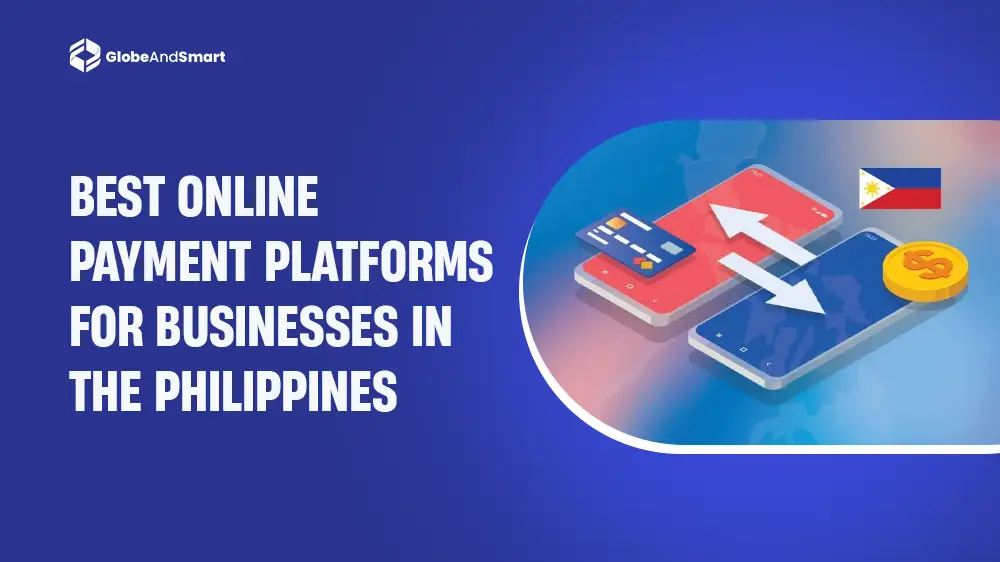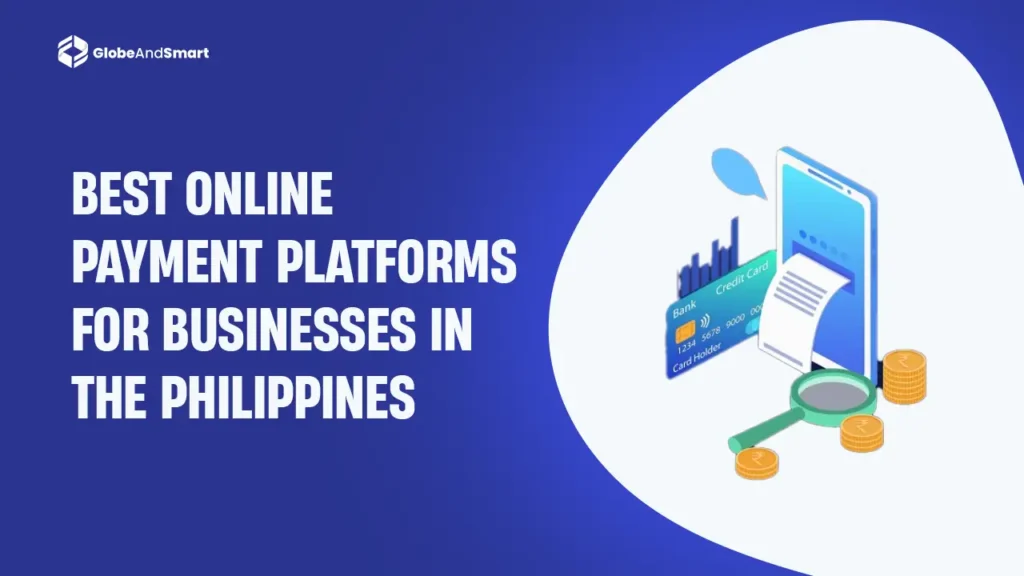Best Online Payment Platforms for Businesses in the Philippines

As e-commerce continues to grow in the Philippines, businesses are increasingly relying on online payment platforms to streamline transactions, expand their customer base, and improve customer satisfaction. The Philippine e-commerce market is projected to grow from US$37.68 billion in 2024 to US$61.41 billion by 2028, underscoring the importance of adopting reliable and secure payment systems. Choosing the right payment platform is crucial, as it impacts not only the payment process but also the overall customer experience and business operations.
This guide will provide you the options and identify the best online payment platforms for businesses in the Philippines.
Payment Gateways in the Philippines: Key Platforms to Consider
As the digital payment landscape in the Philippines evolves, several payment platforms have emerged as key players. Here’s a breakdown of some of the top online payment platforms you should consider for your business:
| Payment Gateway | Key Features | Best For | Pricing |
| HitPay | Multiple payment methods (cards, e-wallets, bank transfers) | Small and medium enterprises | No setup fees, charges per transaction |
| PayPal | Global payment processing, secure, easy integration | Businesses with international customers | 3.49% + fixed fee per transaction |
| PayMaya (Maya) | QR code payments, flexible payment methods | Local businesses looking for affordable transactions | Varies by payment method |
| DragonPay | Online banking, e-wallets, over-the-counter payments | Small businesses need predictable costs | Online Banking: Php 10, E-wallets: Fees vary |
| GCash | Mobile wallet, QR code payments | Retailers and consumers | Contact sales for pricing |
| Stripe | E-commerce integration, strong online solutions | Online businesses seeking robust solutions | Varies by payment method and volume |
1. HitPay: Flexible and User-Friendly for Small and Medium Enterprises
HitPay has become one of the go-to platforms for small and medium-sized businesses (SMBs) in the Philippines, thanks to its ease of use and a variety of payment methods. This all-in-one payment platform allows businesses to accept credit card payments, e-wallet transactions, and bank transfers, all without the need for complicated setup processes or contracts. HitPay offers express onboarding, meaning businesses can be up and running in just 1-2 days.
One of the standout features of HitPay is its no-setup-fee model, making it an attractive choice for startups or businesses looking to minimize upfront costs. Moreover, HitPay offers tools like inventory management, sales tracking, and invoicing, which help business owners streamline operations. The platform’s seamless integration with popular e-commerce platforms and advanced checkout optimization also help reduce cart abandonment rates, boosting overall conversion rates.
Best For: Small and medium-sized businesses looking for an easy-to-integrate and cost-effective payment solution.
Pricing: No setup fees; charges per transaction.
2. PayPal: Trusted and Secure Global Payment Processing
PayPal is one of the most widely used and trusted payment gateways globally, and it remains a top choice for businesses looking to cater to international customers. It supports payments in multiple currencies and offers features such as online checkout, invoicing, and even point-of-sale (POS) systems. PayPal is recognized for its secure transactions, making it a favorite among customers worldwide.
The platform’s global reach allows businesses to accept payments from customers in different countries, which is a great advantage for businesses planning to expand globally. However, PayPal’s transaction fees can be high, particularly for international transactions or currency conversions. It’s important for businesses to factor these costs into their pricing models.
Best For: Businesses with international outreach or those that need to process payments in various currencies.
Pricing: 3.49% + fixed fee per transaction.

3. PayMaya (Maya): A Convenient and Low-Cost Option for Local Businesses
PayMaya, now known as Maya, is one of the leading e-wallets in the Philippines. With a large user base and flexible payment options, Maya is ideal for businesses looking to cater to local customers. It supports QR code payments, which have become increasingly popular in the Philippines due to their convenience and speed. Maya also offers various payment options, including cards, bank transfers, and over-the-counter payments, making it a versatile solution for businesses of all sizes.
The low transaction fees are another advantage of PayMaya, making it an affordable option for small businesses that want to minimize payment processing costs. Maya’s mobile app integrates seamlessly with both online and offline businesses, enabling easy payments for products and services.
Best For: Local businesses that need an affordable and convenient payment platform.
Pricing: Varies by payment method.
4. DragonPay: Reliable Payment Solutions for Predictable Costs
DragonPay has been a leader in online payments in the Philippines, offering a wide variety of payment methods, including online banking, e-wallets, and over-the-counter payments. One of the key features of DragonPay is its recurring payment system, which is ideal for businesses with subscription models or recurring billing. DragonPay also offers fixed pricing, which is advantageous for small businesses that prefer predictable transaction costs.
In addition, DragonPay is known for its seamless integration process, making it a reliable choice for businesses that want to offer customers a variety of payment options. DragonPay’s partnerships with local payment providers, such as 7-Eleven and Bayad Center, make it easy for customers to pay through these convenient channels.
Best For: Small businesses with subscription-based models or those looking for fixed transaction costs.
Pricing: Online Banking: Php 10, E-wallets: Fees vary.
5. GCash: A Widely Accepted Mobile Wallet Solution
GCash is one of the most widely accepted mobile wallets in the Philippines, with extensive integration across local merchants and e-commerce platforms. It allows users to pay bills, send money, buy products, and even invest or get insurance, all through a single app. GCash’s integration with numerous local stores and businesses makes it a convenient choice for both online and offline transactions.
While GCash is primarily a mobile wallet, it also supports QR code payments and can be integrated into online businesses, making it a flexible payment solution. However, businesses should note that GCash’s customer service can be limited, and the app occasionally experiences bugs that can affect transactions.
Best For: Retailers and businesses targeting Filipino consumers.
Pricing: Contact sales for pricing details.
6. Stripe: Powerful E-commerce Integration
Stripe is well-known for its e-commerce capabilities, making it an excellent choice for online businesses. Stripe supports various payment methods, including credit cards, debit cards, and bank transfers. Its seamless integration with online stores, especially through platforms like Shopify, makes it easy to set up and start processing payments quickly.
Stripe’s API allows for advanced customization and offers a wide range of features, such as subscription billing, fraud prevention tools, and multi-currency support. Its user-friendly interface and flexible payment solutions are designed to meet the needs of growing e-commerce businesses.
Best For: Online businesses looking for robust and flexible e-commerce payment solutions.
Pricing: Varies by payment method and volume.
How to Choose the Best Payment Gateway for Your Business
Choosing the right payment gateway for your business depends on various factors, including transaction volume, target audience, and the types of products or services you offer. Here are some key considerations to help you make the best decision:
- Transaction Fees
Different payment platforms have different fee structures, including flat-rate fees and percentage-based fees. Consider how these fees will affect your profit margins, especially if your business handles high transaction volumes. - Payment Method Compatibility
Ensure the payment gateway supports the payment methods your customers prefer. In the Philippines, options like credit/debit cards, e-wallets (GCash, Maya), and online banking are commonly used. Offering multiple payment methods can improve customer satisfaction and reduce cart abandonment. - Ease of Integration
Look for a payment platform that integrates easily with your existing website, mobile app, or e-commerce store. Some payment gateways offer pre-built integrations with popular e-commerce platforms like Shopify, WooCommerce, and Magento. - Security Features
Security is paramount when handling online transactions. Choose a payment gateway that offers robust security features such as encryption, tokenization, and fraud detection tools. This will help protect both your business and your customers from fraudulent activities. - Customer Support
Opt for a payment gateway with reliable customer support to ensure quick resolution of any issues. A good support team can help resolve technical problems, such as failed transactions or account issues, and provide assistance during setup.
Conclusion
Whether you’re running a small business or a large enterprise, selecting a payment gateway that fits your operational needs and customer preferences is crucial for maintaining smooth transactions and fostering growth. From reliable local platforms like GCash and DragonPay to global solutions like PayPal and Stripe, there are plenty of options to choose from. By considering factors such as fees, payment method compatibility, and security, you can find the perfect solution to drive your business forward in today’s competitive digital landscape.

